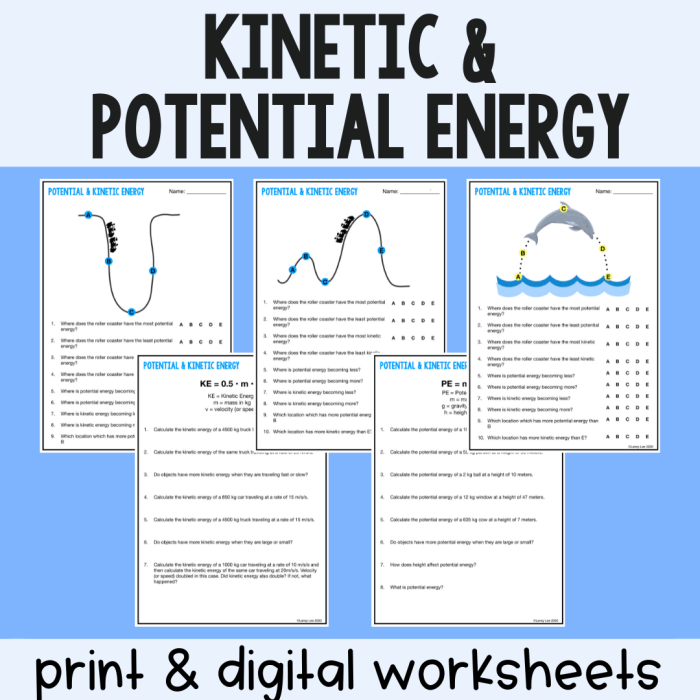The potential energy diagram worksheet answer key provides a comprehensive understanding of potential energy diagrams, their interpretation, and applications. It offers a detailed overview of the concepts, enabling readers to effectively analyze and utilize potential energy diagrams in various scientific fields.
This guide delves into the fundamentals of potential energy, explaining its graphical representation and the concept of potential energy wells. It explores the relationship between potential energy and distance, providing a solid foundation for interpreting potential energy diagrams.
Understanding Potential Energy Diagrams: Potential Energy Diagram Worksheet Answer Key

Potential energy is the energy stored within a system due to its position or configuration. It can be represented on a potential energy diagram, which is a graphical representation of the potential energy of a system as a function of some parameter, such as distance.
A potential energy well is a region on a potential energy diagram where the potential energy is lower than the surrounding regions. This means that a system in a potential energy well is stable and will tend to remain there.
The relationship between potential energy and distance is often nonlinear. For example, the potential energy of a spring increases as the spring is stretched or compressed. The shape of the potential energy diagram can provide information about the stability of the system and the possible reactions that can occur.
Interpreting Potential Energy Diagrams, Potential energy diagram worksheet answer key
The shape of a potential energy diagram can provide information about the equilibrium points and transition states of a system.
- Equilibrium points are points on a potential energy diagram where the potential energy is at a minimum or maximum.
- Transition states are points on a potential energy diagram where the potential energy is at a maximum.
The activation energy for a reaction is the difference in potential energy between the transition state and the reactants.
Applications of Potential Energy Diagrams
Potential energy diagrams are used in a variety of fields of science, including chemistry, physics, and biology.
- In chemistry, potential energy diagrams are used to predict reaction pathways and to understand enzyme catalysis.
- In physics, potential energy diagrams are used to understand the behavior of particles in fields and to design new materials.
- In biology, potential energy diagrams are used to understand the structure and function of proteins and other biomolecules.
Creating and Analyzing Potential Energy Diagrams
Potential energy diagrams can be created using a variety of methods, including experimental measurements and computational simulations.
Once a potential energy diagram has been created, it can be analyzed using mathematical equations or computational tools.
Mathematical equations can be used to calculate the equilibrium points, transition states, and activation energy for a reaction.
Computational tools can be used to generate and analyze potential energy diagrams for complex systems.
FAQ Guide
What is a potential energy diagram?
A potential energy diagram is a graphical representation of the potential energy of a system as a function of a reaction coordinate, such as distance or time.
How can I interpret a potential energy diagram?
The shape of a potential energy diagram provides information about the stability of the system and the energy changes that occur during a reaction.
What is the activation energy of a reaction?
The activation energy is the minimum amount of energy that must be supplied to a system to initiate a reaction.